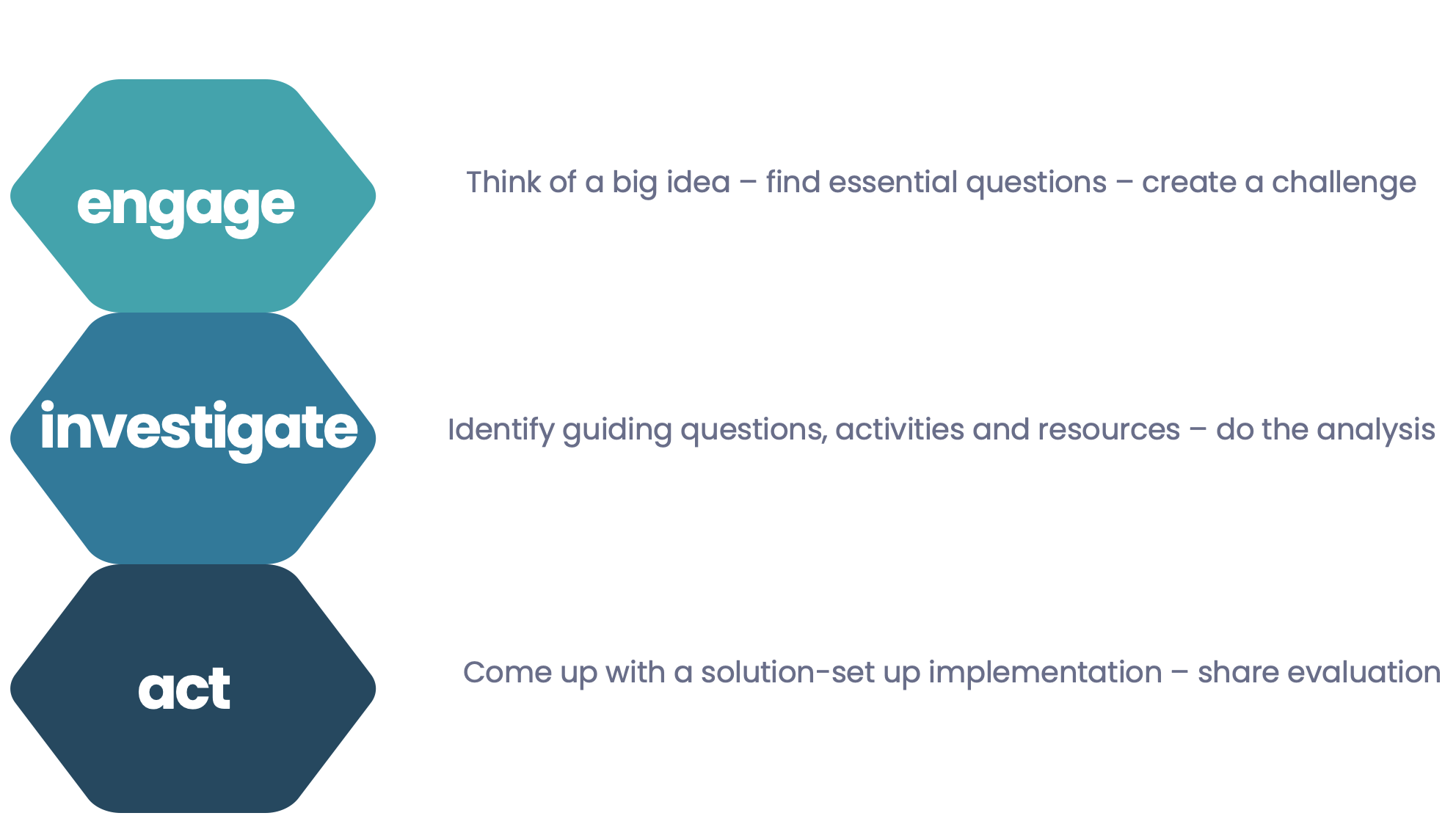Challenge-Based Learning: How to Apply CBL to Excel in a New Role

Beginning this year, I got a new role as a content manager for international markets. Exciting and slightly overwhelming. There's so much to learn!
Starting a new job can be a daunting experience. You are faced with new challenges, new people, and new processes. It can be overwhelming, and it can take time to feel comfortable and confident in your new position. One way to ease the transition and accelerate your learning is to apply the principles of Challenge-Based Learning (CBL). By using this approach, you can actively engage with your new environment, gain a deeper understanding of your role, and develop the skills and knowledge necessary to succeed.
CBL has gained popularity in recent years because it promotes engagement, enhances problem-solving skills, and fosters creativity. In this article, we will explore how CBL can be applied to starting a new role and the benefits it can offer to new employees.
Table of Contents
Introduction to Challenge-Based Learning (CBL)
CBL was first introduced as a way to help students develop 21st-century skills such as critical thinking, problem-solving, collaboration, and creativity. It was designed to be a flexible and adaptable approach to learning that could be used in a variety of educational contexts, from K-12 schools to higher education.
It is an engaging multidisciplinary approach to teaching and learning that encourages learners to leverage the technology they use in their daily lives to solve real-world problems. Challenge-Based Learning is collaborative and hands-on, asking students to work with peers, teachers, and experts in their communities and around the world to ask good questions, develop deeper subject area knowledge, accept and solve challenges, take action, and share their experience (1).
The classic CBL framework was developed to tackle the global challenges facing the planet: environmental, economic, social, energy-related and other issues. When thinking from the company's perspective, you can limit the scope with the company mission - LLLab Pro showed how this approach would work for corporate learning (2). And finally, you can adjust it to match your own learning needs by following the CBL framework.

Let's say you want to learn how to develop a content marketing plan. Using CBL, you can create a mini-project that focuses on this challenge.
- Think of the big idea: How does my marketing impact my users?
- Create the challenge: Improve your marketing strategy
- Generate guiding questions that will direct the research of the challenge topic, e.g.:
- What business objectives does my marketing strategy need to support?
- How can I improve my strategy?
- What does my competitive landscape look like?
- Think of the activities and resources that can help you set the foundation to develop insightful and realistic solutions.
- Based on what you learned from the resources and activities, develop your solution - concrete and actionable: e.g. I will send a mass email to past subscribers advertising a deal to save $20 if they resubscribe now. The bottom of the email features a big button flashing "Subscribe now."
This framework encourages you to take an active role in your learning, making you responsible for your own progress and outcomes.
Five Reasons Why CBL Works
There are several reasons why CBL is an effective method for professional and personal growth and learning:
1. Active engagement: CBL encourages active engagement in the learning process by presenting learners with real-world challenges that require them to think critically, problem-solve, and apply knowledge in meaningful ways.
Let's say your challenge is improving your writing skills and creating high-quality content that engages your audience.
Using the CBL framework, define a clear goal for the project, such as writing a blog post that generates 500 views, and establish a timeline for completion. To complete the project, you will need to actively engage:
- research best practices for writing engaging content
- identify areas for improvement in your writing
- develop a plan for implementing those improvements.
2. Relevance: CBL is relevant to learners' lives and interests, making the learning experience more engaging and motivating. The challenges presented in CBL are often related to learners' personal or professional goals, which can increase their investment in the learning process.
3. Collaborative learning: CBL often involves collaborative learning, where learners work in groups to solve a challenge. This can enhance learning by providing learners with the opportunity to exchange ideas and perspectives, learn from each other's experiences, and develop teamwork skills.
4. Flexibility: CBL is a flexible method of learning that can be adapted to meet learners' individual needs and interests. Learners can choose challenges that are relevant to their personal or professional goals and can work at their own pace.
5. Transferable skills: CBL focuses on developing skills that are transferable to other areas of life, such as problem-solving, critical thinking, and collaboration. These skills are valuable in many personal and professional contexts, making CBL an effective method for personal growth and development.
Overall, CBL is an effective method of learning because it presents you with real-world challenges that are relevant to your life and encourages active engagement, collaboration, and the development of transferable skills - exactly what you need when starting a new role.
Applying CBL to Starting a New Role
The first step in applying CBL to starting a new role is to identify the key challenges you will face. This could include understanding the company culture, getting to grips with new technology or software, learning new processes and procedures, and building relationships with colleagues. Often, new role means all of these challenges.
Once you have identified your big idea and created your challenges, you can begin to develop a plan to tackle them.
Here are a few ideas to apply CBL in your new role:
- create a series of mini-projects. Each project should be focused on addressing a specific challenge and should include a clear goal, defined deliverables, and a timeline for completion. By breaking down the challenges into smaller, more manageable tasks, you can stay focused and motivated and avoid feeling overwhelmed.
- identify activities and resources. These activities and resources will assist you with answering the guiding questions and set the foundation to develop insightful and realistic solutions. It can be a review of company's shared documents, going through onboarding videos, talking to your co-workers, creating lists of everything you learn and things you don't understand.
- seek feedback and support. It is essential to involve others in the learning process, as this can help to deepen your understanding and accelerate your progress. Seek out colleagues who can provide feedback and guidance and be open to constructive criticism. Remember that CBL is a collaborative process and that you can learn a great deal from working with others. I always ask my "work buddy" to review my work, go through the task with me and then discuss how this can be applied to my next challenge.
- develop a learning journal. Personally, I'd always choose a physical notebook or reMarkable, but it can be an online document, or even a blog. The purpose of the journal is to record your learning journey, reflect on your progress, and identify areas for improvement. This can be a powerful tool for self-reflection and can help you to stay focused and motivated.
Benefits of Applying CBL
In addition to the benefits outlined above, there are several other advantages to using CBL to start a new role.
Firstly, it can help to develop your critical thinking skills. By presenting you with complex, real-world challenges, CBL encourages you to think creatively and develop innovative solutions. This can be particularly useful in a new role, where you may be required to solve problems that are unfamiliar or outside of your comfort zone.
Secondly, CBL can help to build your confidence. By setting achievable goals and completing mini-projects, you can develop a sense of accomplishment and build momentum. This can be particularly important in the early stages of a new role, where you may feel uncertain and unsure of yourself.
Finally, CBL can help you to build relationships with your colleagues. By working collaboratively on mini-projects, you can get to know your colleagues and develop a sense of teamwork and shared purpose. This can be particularly important in a new role, where building strong relationships can help you to integrate into the team and feel part of the wider organisation.
Conclusion: Start Your Personal Growth Journey with CBL
In conclusion, starting a new role can be challenging, but by applying the principles of CBL, you can accelerate your learning, develop your skills and knowledge, and build your confidence. By breaking down the challenges into smaller, more manageable tasks, seeking feedback and support, and developing a learning journal, you can stay focused and motivated and make progress towards your goals. The benefits of using CBL to start a new role include the development of critical thinking skills, increased confidence, and the building of relationships with colleagues. By embracing this approach, you can make a successful transition into your new role and lay the foundations for a fulfilling and rewarding career.
Suggested reading on the topic
(1) Nichols, Mark H., Cator, Karen (2008), Challenge Based Learning White Paper. Cupertino, California: Apple, Inc.



